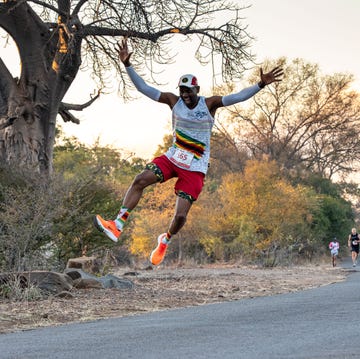We’re talking about mileage again. But this time, it has elicited feelings of despair – and it’s causing an existential crisis.
Every summer, I run a 5K series in a local parkway. It’s free. It’s timed by the gun. There are no frills (but there are hot dogs and chips after the race). I love them – the races, not the hot dogs. This year, the organisers tweaked the course to avoid construction work on one of the bridges. I actually prefer the new route to the previous one – it’s shadier and runs more on pavement than slippery gravel.
It’s also shorter by about .02 miles, according to my GPS running watch. (I’d run the course twice before and recorded the same distance both times, so I know that it’s not a tangent thing.)
What everyone's reading
When I ran this year’s race in June, I was feeling really good – better than I’d anticipated. I checked my watch considerably in the second half of the final mile and saw that I was going to dip under 20 minutes. I gutted it out and my watch clocked 19:51. Elated!
But then I looked more closely: 3.08 miles.
Gut-wrenched.
Did I run a 5K in 19:51? Or did I run a 5K in 20:06, which is what the race posted on its results? How did we land on a 20:06 if the course was short? Was this some sort of race director maths?
So, here’s the conundrum: if I didn’t wear a running watch, I wouldn’t question the results, time or distance. It would have been a throwback to my high school cross-country and track days.
But, if I didn’t wear a running watch, I wouldn’t have seen how close I was to completing the race in under 20 minutes – and I definitely wouldn’t have found that extra gear for the last 300m.
Deep down, I know that the official results are what the race posts, not what’s on my watch. (Just take the flip side: if a marathon course measures long – say, 26.32 miles – and I scraped a Boston Marathon qualifying time at the 26.2-mile mark but not through the finish line, we know that I didn’t punch my ticket to Boston.)
At the end of the day, these mileage discrepancies feed into my, well, Type A quirks. I don’t want to say that I ran faster than I did – I just want the course to be accurate. And if it can’t be accurate, I want it to err on the side of slightly longer. You get it.
Next time, I guess that I’ll have to jog around the finish chute or settle for a 19:51 result at a 3.08 mile race. Or run faster.













